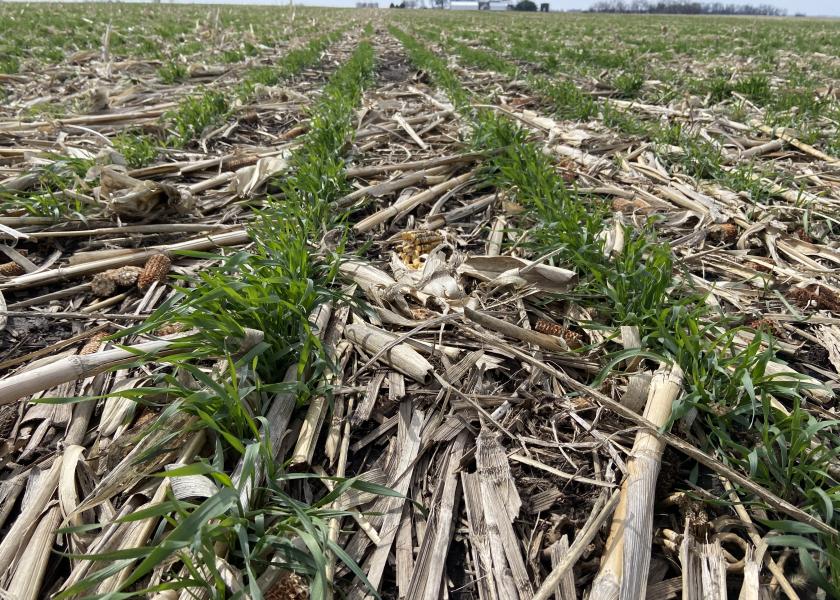Eyes on Soil Health: Conservation practices help reduce erosion, boost organic matter

Veteran farmer Don Guinnip knows the value of conservation. Farming in the Wabash Valley near Marshall, Ill., the sixth-generation corn and soybean producer is accustomed to growing crops in what he says is “not prime farmland.”
That’s why he says getting educated about how to protect the soil and improve it was an important trait he learned from his grandfather.
“We have 6- to 10-inch topsoil and most of it has been farmed,” Guinnip explains. “We have to be a lot more conscious of erosion and water. I learned that no-till is a lot better than conventional. The rotation helps spread out your risk.”
Guinnip isn’t alone in his thinking. Southeast Iowa farmer Rob Stout uses 100% no-till on his corn and soybean acreage. A third-generation farmer, Stout began using conservation tillage in 1993 to help alleviate erosion and save labor and fuel costs.
“But we found out as we did that, our soil health got a little better, too,” Stout says. “We didn’t want to see our soil washing into the ditches and streams, but there are so many other benefits to it.”
After using no-till for several years, Stout incorporated cover crops and animal waste as fertilizer in his management plan. He says using less commercial fertilizer helps the soil capture more nutrients from organic matter.
Seeing is Believing
In a 10-year study with Practical Farmers of Iowa and Iowa Learning Farms, Stout says data showed cover crops helped improve C02 respiration and soil infiltration rates, which resulted in less water standing on fields.
Additionally, he says a tea bag test revealed greater microbial action in the soil where cover crops were growing.
“So, we’re getting a lot more microbial growth which is good for turning any cover crop residue into organic matter and fertilizer for the next year’s crop,” Stout explains. “Those are advantages. We’ve been able to lower our amounts of synthetic fertilizer use because of that.”
Stout reports an increase of about 1 ½ points in soil organic matter since incorporating cover crops into his rotation.
“We’ve gained quite a bit of organic matter, and every percent of organic matter gives you more nutrients that are available for your crop,” Stout says.
Count on Soil Quality
While no-till and cover crops have helped farmers like Don Guinnip and Rob Stout reduce erosion and improve the organic matter content in the soil they farm, fellow grower Frank Rademacher sees those same results and much more.
“The actual benefits to soil quality have been incredible,” Rademacher says of his own operation since he started using no-till and cover crops on his Illinois farm.
For new adopters looking for a way to start preserving the soil, he says cost-share opportunities are a great resource and can help growers remove some of the risk involved in getting started in a conservation production protocol.
“This is especially true in a soil health system, where it could take several years for soils to improve,” Rademacher explains. “Having those resources is great to smooth over that time when soils might be in poor shape as they adapt.”
A stewardship advocate, Rademacher says having a general understanding of and experience with a multitude of conservation practices, especially when funding is available, is a great way to keep farming operations well-prepared for the future.
“We’re strong believers in the system we’ve built and have shown that our profit levels can easily match or succeed those of conventional operations,” Rademacher says.







